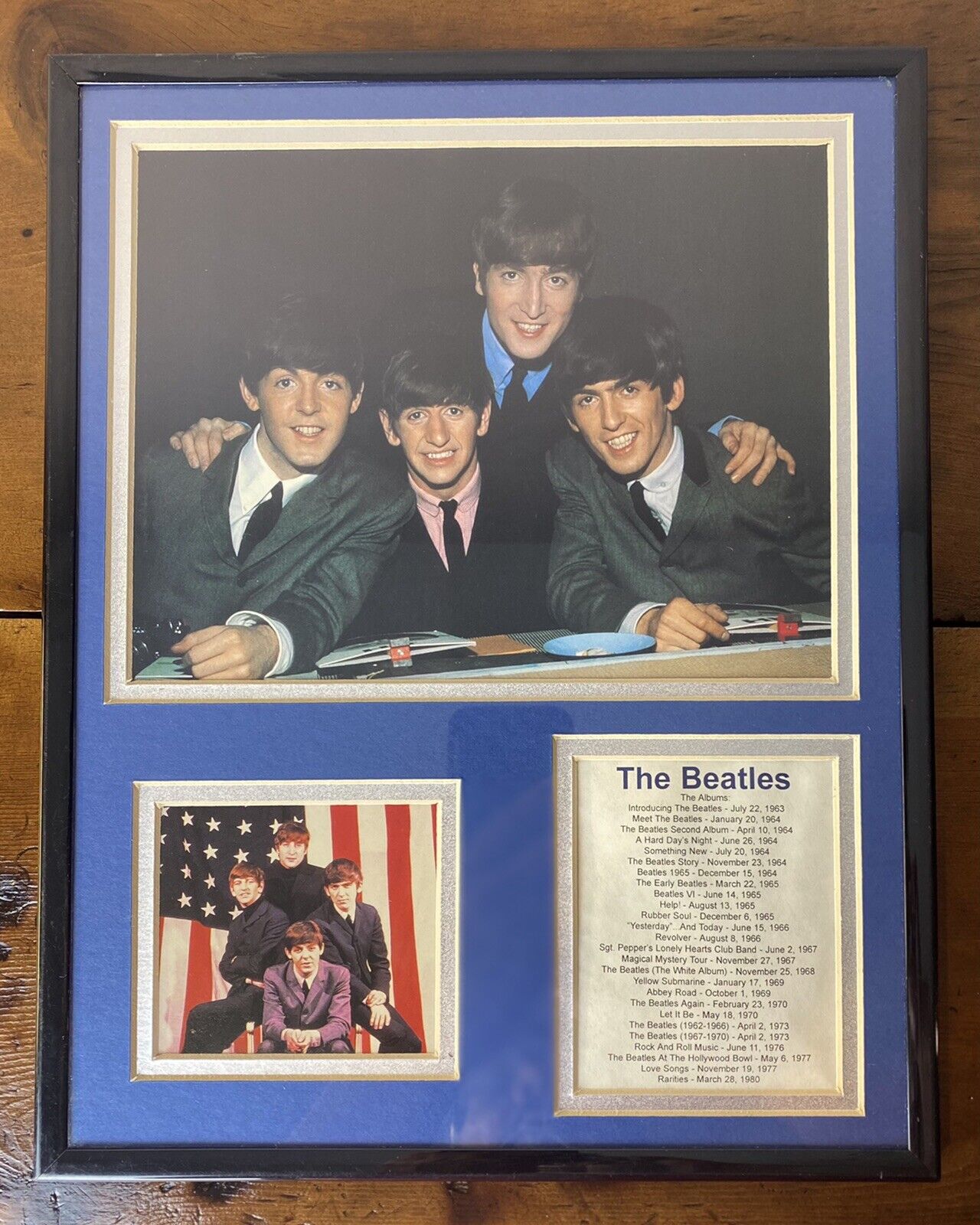-40%
The Beatles, Abbey Road 1969 Sunset Billboard Picture 8x10 Print Of Real Photo
$ 10.55
- Description
- Size Guide
Description
Great 8x10 Gloss Photo Print From Original Vintage 1969 Photo taken of billboard promoting the album Abbey Road. Famous Sunset Blvd. billboard prank story behind this vintage photo (read more below)High resolution image really beautifully stands out, and is durable in high gloss protection for a lifetime of enjoyment, unlike vintage/antique photographs which have decayed with the passing of time.
Will come packaged with care.
Photo would look fantastic framed and displayed!
This is a beautiful print from the original hard to find and expensive piece, without the high cost.
You will not be receiving a first edition version original but a beautiful photo print from the original.
Please contact me if you have any questions, thank you!
-Sunset Strip has a bit of its own Abbey Road history, which actually was a mystery for over 40 years.
The Beatles’ first Sunset Strip billboard was also the band’s last studio album. By the time Abbey Road was released, John, Paul, George and Ringo were so recognizable that designer John Kosh (now known as Kosh) didn’t even add the band’s name on the legendary album cover.
Assigned by Capitol Records to transform Kosh’s album into a billboard overlooking the Sunset Strip, designer Roland Young also kept the image free of text. In fact, he kept most of the original album design but cropped out the London streetscape and extended the heads into the sky as if the band was crossing Sunset Blvd.
Shortly after Abbey Road went up on the Sunset Strip that December, Bob Quinn decided to celebrate his 19th birthday by pulling a prank that involved that Fab Four billboard. He and his buddies planned to cut off the oversized wooden head of Paul McCartney. At the time, a rumor had spread that McCartney was killed in a car accident in 1966. Conspiracy theorists interpreted the Abbey Road album cover as a funeral procession with John as the clergyman in all white, Ringo was the mourner dressed in all black and George, wearing jeans, was the gravedigger. McCartney’s bare feet symbolized his death because the dead are buried without shoes in some burial practices.
Bob Quinn was a huge Beatles’ fan. He saw them play Dodger Stadium in 1966. His sister saw the band at the Hollywood Bowl. Quinn grew up near the Sunset Strip and attended grammar school just a block away. This famed boulevard was a teen playground for him, his friends, and many local teenagers.
Just a few years younger than Quinn, photographer and author Robert Landau also lived near the Sunset Strip and considered the legendary street his backyard. The son of a prominent gallery owner on La Cienega, Landau was encouraged to create art and chose photography as his medium. When he saw these hand-painted billboards popping up along the Strip, he pulled out his camera to document this boulevard-turned-gallery of oversized rock n’ roll art.
“There weren't that many ways for artists, in this case rock and roll artists, to communicate. This was a way they could visually communicate directly with their fans or with other people in their business. So, in a way, it was a really personal form of expression and it was overlooked or missed,” Landau said.
Companies kept billboards up only for a few weeks before painting over them, so Landau’s photos provide rare documentation of, as he explains, “this really interesting period in both rock and roll history and in Los Angeles history.” He published these photos in a book by Angel City Press called Rock ‘N’ Roll Billboards of the Sunset Strip and spoke to KCRW when it was published.
Landau is also finishing up a documentary called Sign O' The Times: Rock 'N' Roll Billboards of the Sunset Strip with Rugged Entertainment, which will dive deeper into the stories of this pop culture art form.
The only other known remaining relic of this ephemeral art is Paul McCartney’s billboard head. On the evening of his 19th birthday in December 1969, Quinn and his friends scouted out the scene near the intersection of Sunset Blvd and La Cieneaga. When the coast was clear (about 2 am), they jumped up onto the back of the billboard, only four feet off the ground, and sawed off Paul’s head. The whole process took only about ten to twelve minutes.
Landau noticed the missing head and photographed the altered billboard before it was taken down. He wasn’t the only one who spotted the change. The billboard company quickly called designer Roland Young, who was working in the nearby Capitol Records building. Young’s initial instinct was to replace it. But when he drove to the site and saw it in person, he changed his mind. With rumors swirling about Paul’s death, this missing head would garner more attention than the original design. As Young explained in Landau’s book, “that was another level of art, the first interactive billboard. Whoever took it was a street artist and didn’t know it.”
Bob Quinn would love to add Paul McCartney’s signature to the back of the billboard head. McCartney performs at Dodger Stadium on July 13th, so perhaps divine intervention will work in his favor. And when Beatles fans celebrate that famous London crosswalk in September, Angelenos can smile at this bit of Abbey Road history on the Sunset Strip.









